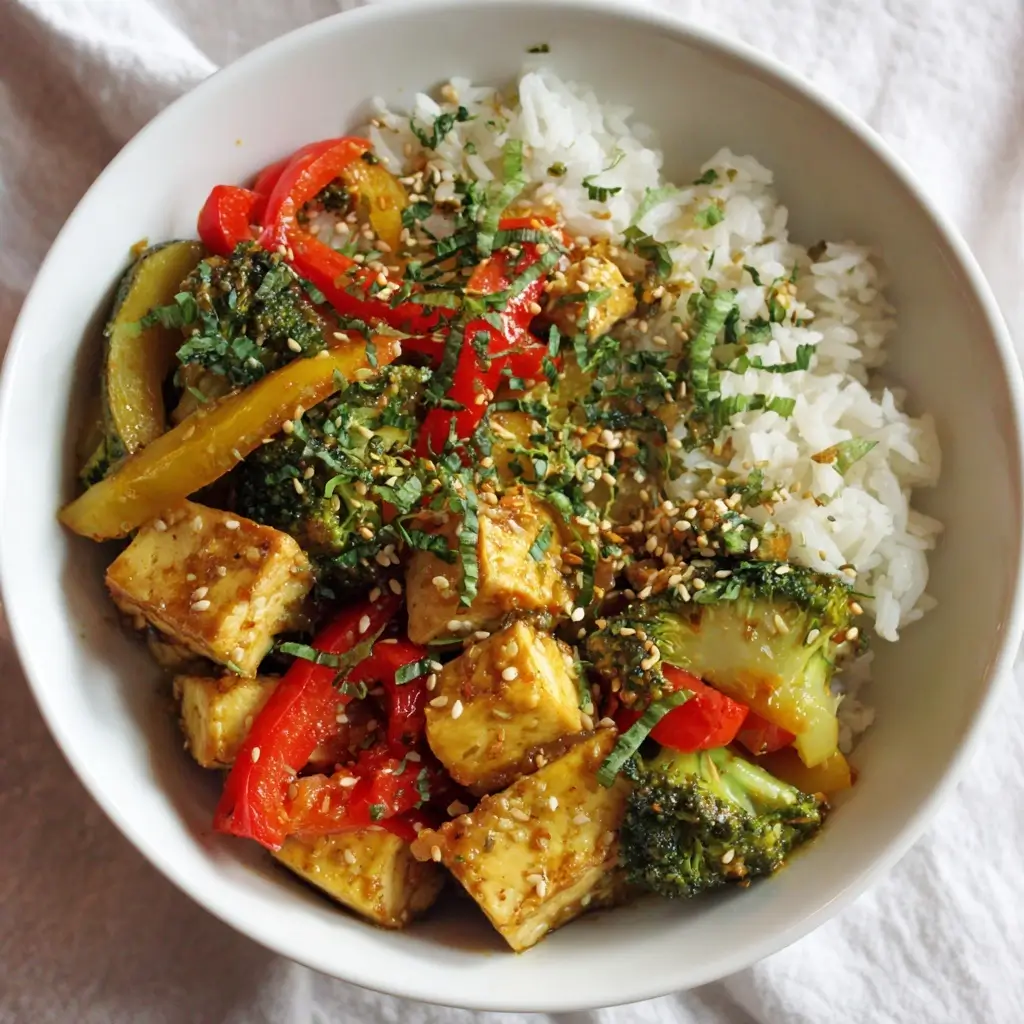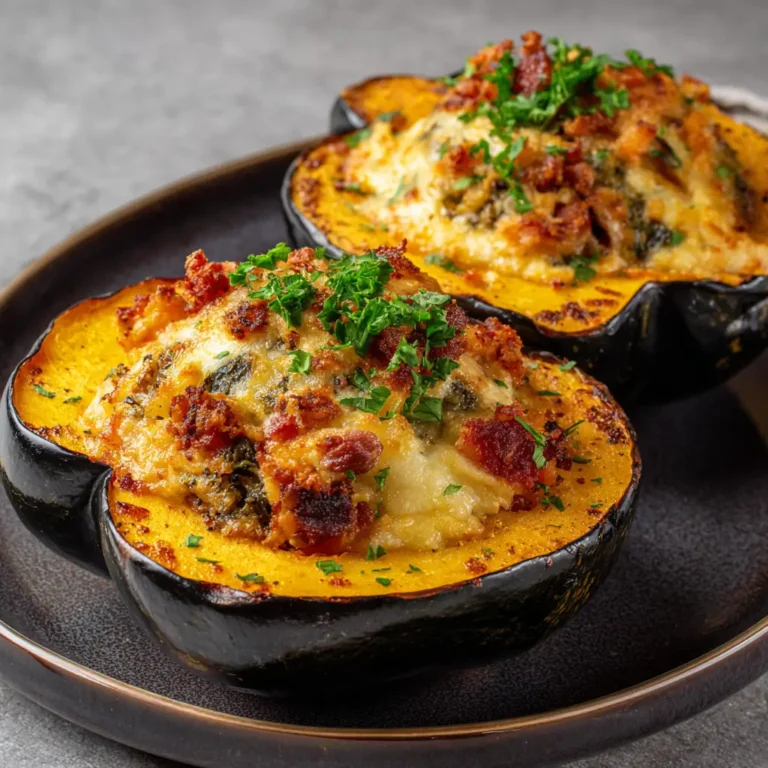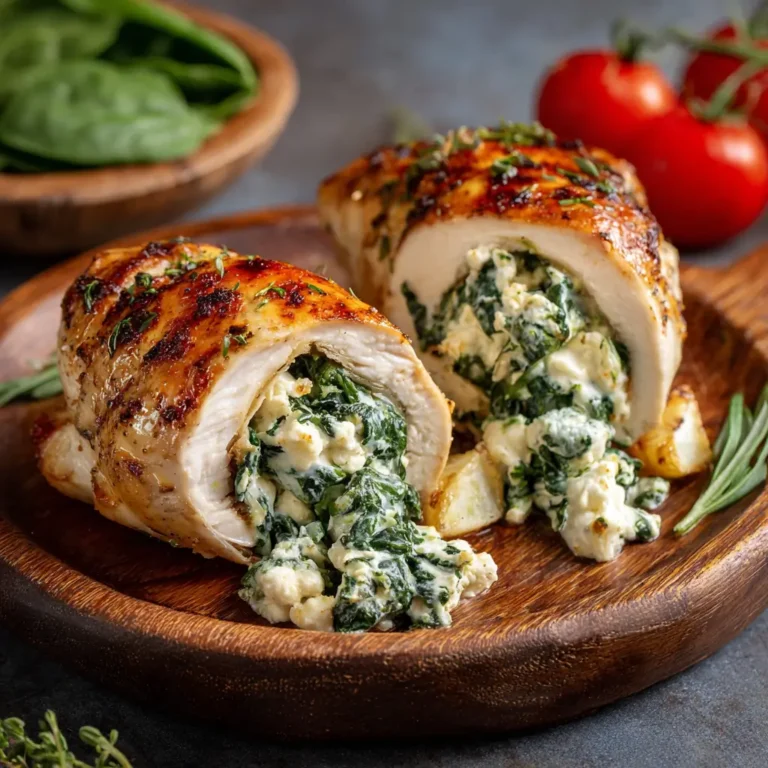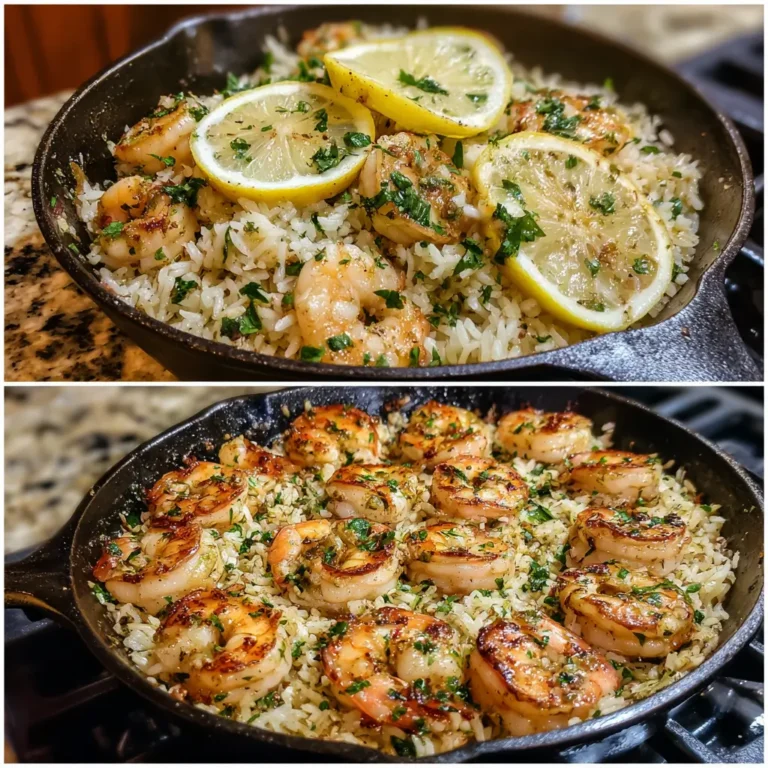Honey Ginger Tofu and Veggie Stir Fry
Honey Ginger Tofu and Veggie Stir Fry: A Flavorful, Healthy Delight
The History
The stir-fry cooking technique has deep roots in Chinese culinary tradition, dating back over 2,000 years to the Han Dynasty. The method was developed as a fast, efficient way to cook food using minimal oil while preserving flavor, texture, and nutrients. Over centuries, stir-frying spread throughout Asia and evolved with regional influences, incorporating new ingredients and seasonings. The combination of tofu and vegetables became particularly popular in vegetarian and plant-based diets across East and Southeast Asia, especially within Buddhist monastic communities where meatless meals were customary.
The modern twist of adding honey and ginger to tofu stir-fries likely emerged from fusion cuisine trends in the late 20th century, blending traditional Asian flavors with Western preferences for sweet-savory profiles. Honey, long used in both Eastern and Western medicine and cooking, brings natural sweetness and a glossy glaze, while ginger—prized in Traditional Chinese Medicine for its digestive and anti-inflammatory properties—adds warmth and zing. Today, Honey Ginger Tofu and Veggie Stir Fry is celebrated globally as a nutritious, flavorful dish that bridges cultural culinary practices and caters to diverse dietary needs, including vegan, gluten-free, and low-calorie lifestyles.
Ingredients Breakdown
Tofu: Firm or extra-firm tofu is ideal for stir-frying because it holds its shape well and can be pressed to remove excess moisture, allowing it to crisp up when pan-seared or baked. Tofu is a complete plant-based protein made from soybeans and is rich in iron, calcium (especially if calcium-set), and essential amino acids.
Honey: Adds natural sweetness and helps create a sticky, caramelized glaze on the tofu and vegetables. Raw, unfiltered honey also contains antioxidants and trace enzymes. For a vegan alternative, maple syrup or agave nectar can be substituted.
Fresh Ginger: Grated or finely minced, fresh ginger imparts a bright, spicy warmth that enhances the overall aroma and taste of the dish. It’s known for its anti-nausea, anti-inflammatory, and immune-supportive properties.
Garlic: A staple in global cuisines, garlic adds depth and pungency. When sautéed, it mellows into a rich, savory base note that complements the honey and ginger beautifully.
Vegetables: A colorful mix such as bell peppers (red, yellow, or green), broccoli florets, snap peas, carrots, mushrooms, baby bok choy, and zucchini not only add visual appeal but also boost fiber, vitamins (A, C, K), and phytonutrients. Feel free to use seasonal or frozen veggies for convenience.
Soy Sauce or Tamari: Provides umami and saltiness. Use reduced-sodium versions to control salt intake, and opt for tamari if you need a gluten-free option.
Rice Vinegar or Apple Cider Vinegar: A splash adds tanginess to balance the sweetness of the honey, enhancing the sauce’s complexity.
Sesame Oil: Used sparingly due to its strong, nutty flavor, it’s typically drizzled at the end to elevate the aroma. Toasted sesame oil offers a deeper, richer profile.
Oil for Cooking: A neutral high-heat oil like avocado, grapeseed, or refined coconut oil works best for stir-frying without burning.
Cornstarch: Often mixed with water or broth to make a slurry, it thickens the sauce slightly, helping it cling to the tofu and vegetables.
Garnishes: Green onions, toasted sesame seeds, crushed red pepper flakes, or cilantro add freshness, crunch, and heat, finishing the dish with vibrant layers of flavor.
Step-by-Step Recipe
- Press the Tofu: Remove the tofu from its packaging and drain the liquid. Wrap it in a clean kitchen towel or paper towels and place a heavy object (like a cast-iron skillet or books) on top. Press for 15–30 minutes to extract excess moisture. This step ensures the tofu crisps up better during cooking.
- Prepare the Marinade/Sauce: In a small bowl, whisk together 3 tablespoons honey, 2 tablespoons soy sauce (or tamari), 1 tablespoon rice vinegar, 1 tablespoon grated fresh ginger, 2 minced garlic cloves, and 1 teaspoon cornstarch. Set aside.
- Cut and Marinate Tofu: Slice the pressed tofu into ¾-inch cubes or triangles. Toss gently with 1 tablespoon of the prepared sauce and let sit for 10–15 minutes while prepping vegetables.
- Prepare Vegetables: Wash and chop all vegetables into uniform sizes to ensure even cooking. Keep them separated by cooking time (e.g., harder veggies like carrots go in first, softer ones like bok choy later).
- Cook the Tofu: Heat 1–2 tablespoons of neutral oil in a large wok or non-stick skillet over medium-high heat. Add tofu in a single layer and sear until golden brown on all sides (about 6–8 minutes total). Remove and set aside.
- Stir-Fry Vegetables: In the same pan, add a bit more oil if needed. Start with aromatics: add minced ginger and garlic, stir for 30 seconds until fragrant. Add harder vegetables (carrots, broccoli) and stir-fry for 2–3 minutes. Then add medium vegetables (bell peppers, snap peas) and cook another 2–3 minutes. Finally, add soft vegetables (mushrooms, bok choy) and cook for 1–2 minutes until crisp-tender.
- Combine Everything: Return the cooked tofu to the pan. Pour in the remaining sauce and stir well. Cook for 2–3 minutes, stirring constantly, until the sauce thickens and coats everything evenly.
- Finish and Serve: Drizzle with ½–1 teaspoon toasted sesame oil. Taste and adjust seasoning—add a pinch of red pepper flakes for heat or a splash of lime juice for brightness. Garnish with sliced green onions and sesame seeds.
- Serve Hot: Enjoy immediately over steamed jasmine rice, brown rice, quinoa, or cauliflower rice for a low-carb option.
Tips
- Prep Ahead: Chop all ingredients before turning on the stove—stir-frying moves quickly!
- High Heat is Key: Use medium-high to high heat to achieve that authentic “wok hei” (breath of the wok) flavor without steaming the ingredients.
- Don’t Crowd the Pan: Cook tofu and veggies in batches if necessary to avoid overcrowding, which leads to soggy results.
- Better Browning: For extra crispy tofu, toss the cubes in 1 tablespoon cornstarch before frying, or bake them at 400°F (200°C) for 20–25 minutes, flipping halfway.
- Sauce Consistency: If the sauce is too thick, add a splash of vegetable broth or water. If too thin, let it simmer a bit longer or add a touch more cornstarch slurry.
- Flavor Boost: Add a teaspoon of miso paste or a dash of fish sauce (if not vegan) to deepen umami notes.
- Leftovers: Store in an airtight container in the fridge for up to 4 days. Reheat gently in a pan to preserve texture. Freeze for up to 3 months (texture may soften slightly).
Variations and Customizations
- Protein Swaps: Replace tofu with tempeh, seitan, chicken breast, shrimp, or thinly sliced beef for non-vegetarian options.
- Vegan Version: Substitute honey with pure maple syrup, brown rice syrup, or date syrup for a fully plant-based dish.
- Gluten-Free: Use certified gluten-free tamari instead of soy sauce and ensure all other ingredients are GF-safe.
- Low-Sugar: Reduce honey to 1–2 teaspoons and enhance flavor with extra ginger, garlic, or a splash of orange juice.
- Spicy Kick: Add sriracha, chili garlic sauce, or a diced fresh red chili to the sauce for heat lovers.
- Extra Crunch: Toss in cashews, water chestnuts, or bamboo shoots during the final stir.
- Fruit Twist: Add pineapple chunks or mandarin orange segments for a tropical flair.
- Noodle Stir-Fry: Skip the rice and serve over soba noodles, rice noodles, or udon for a heartier meal.
- Seasonal Rotations: Use asparagus in spring, zucchini and eggplant in summer, kale and squash in fall, and hearty greens like gai lan in winter.
Health Considerations and Nutritional Value
Honey Ginger Tofu and Veggie Stir Fry is a nutritionally balanced meal that supports a variety of health goals. Tofu provides about 10 grams of protein per ½ cup serving, making it excellent for muscle maintenance and satiety. It’s also a good source of calcium, magnesium, and isoflavones, which may support hormonal balance and heart health.
The array of colorful vegetables delivers a wide spectrum of antioxidants, including beta-carotene (from carrots and peppers), vitamin C (broccoli, bell peppers), and glucosinolates (cruciferous veggies like broccoli), which have been studied for their cancer-protective effects. Fiber content is substantial, promoting digestive health and stable blood sugar levels.
Ginger has been shown in clinical studies to reduce nausea, inflammation, and muscle pain, while honey—especially raw—contains polyphenols and has antimicrobial properties. However, honey is still a form of added sugar, so moderation is key, particularly for individuals managing diabetes or insulin resistance.
A typical serving (1.5 cups over brown rice) contains approximately:
- Calories: 350–420
- Protein: 18–22g
- Carbohydrates: 45–55g (including 8–12g natural sugars)
- Fat: 12–16g (mostly unsaturated)
- Fiber: 7–10g
- Sodium: 600–800mg (lower if using reduced-sodium soy sauce)
This dish is naturally low in saturated fat, cholesterol-free, and rich in plant-based nutrients. To further improve heart health, pair it with omega-3-rich toppings like flaxseeds or walnuts. For those with soy sensitivities, consider swapping tofu for chickpeas or lentils, though the texture and protein profile will differ.
Ingredients
- 1 block (14 oz) extra-firm tofu, pressed and cubed
- 3 tbsp honey (or maple syrup for vegan option)
- 2 tbsp low-sodium soy sauce or tamari
- 1 tbsp rice vinegar or apple cider vinegar
- 1 tbsp fresh ginger, finely grated
- 2 cloves garlic, minced
- 1 tsp cornstarch
- 2 tbsp neutral cooking oil (avocado, grapeseed, etc.)
- 1 tbsp toasted sesame oil (for finishing)
- 1 red bell pepper, sliced
- 1 cup broccoli florets
- 1 cup snap peas
- 1 medium carrot, julienned
- 1 cup sliced mushrooms (shiitake or cremini)
- 2 cups baby bok choy, chopped
- 2 green onions, sliced (for garnish)
- 1 tbsp sesame seeds (toasted, for garnish)
- Optional: red pepper flakes, lime wedges
Directions
- Press tofu for 15–30 minutes, then cut into cubes and marinate in 1 tbsp of sauce mixture for 10 minutes.
- In a small bowl, whisk honey, soy sauce, vinegar, ginger, garlic, and cornstarch to make the sauce. Reserve ⅓ for marinating, use rest later.
- Heat 1 tbsp oil in a wok or large skillet over medium-high heat. Add tofu in a single layer; cook until golden and crisp on all sides. Remove and set aside.
- Add remaining oil to the pan. Sauté ginger and garlic for 30 seconds until aromatic.
- Add carrots and broccoli; stir-fry 2–3 minutes. Add bell peppers and snap peas; cook 2 minutes more.
- Add mushrooms and bok choy; stir-fry 1–2 minutes until tender-crisp.
- Return tofu to the pan. Pour in remaining sauce and stir to coat. Cook 2–3 minutes until sauce thickens and bubbles.
- Remove from heat. Stir in sesame oil. Adjust seasoning to taste.
- Transfer to serving plates. Garnish with green onions, sesame seeds, and optional red pepper flakes.
- Serve immediately over your choice of grain or noodle base.
FAQ
Can I make this recipe ahead of time?
Yes! You can press and cube the tofu, chop the vegetables, and prepare the sauce up to one day in advance. Store each component separately in the fridge. Assemble and cook just before serving for the best texture.
Why is my tofu turning out mushy?
Not pressing the tofu enough is the most common cause. Excess water prevents proper browning. Also, avoid stirring too frequently—let it sear undisturbed for a few minutes to develop a golden crust.
Is this dish suitable for weight loss?
Absolutely! With high protein, fiber, and low saturated fat, this stir-fry is filling and nutrient-dense. Use less honey, more non-starchy veggies, and serve over cauliflower rice to reduce calories further.
Can I use frozen vegetables?
Yes, but thaw and drain them well first to prevent excess moisture in the stir-fry. Frozen peas, edamame, and stir-fry blends work well, though fresh veggies offer superior texture.
How do I store leftovers?
Cool completely and store in an airtight container in the refrigerator for 3–4 days. Reheat in a skillet over medium heat to restore texture. Avoid microwaving for too long, as it can make tofu rubbery.
What can I substitute for honey?
Maple syrup, agave nectar, brown rice syrup, or even a ripe mashed banana (though it alters flavor) can replace honey. For zero sugar, use a monk fruit syrup blend designed for cooking.
Is tofu healthy?
Yes. Tofu is low in calories, high in protein and minerals, and linked to lower cholesterol and improved bone health. Choose organic, non-GMO tofu when possible to avoid pesticides and additives.
Summary
Honey Ginger Tofu and Veggie Stir Fry is a vibrant, nutrient-packed dish that combines the savory depth of soy sauce, the warmth of fresh ginger, and the natural sweetness of honey for a perfectly balanced meal. Quick to prepare, endlessly customizable, and suitable for various diets, it’s a wholesome favorite for weeknight dinners and meal prep alike.






